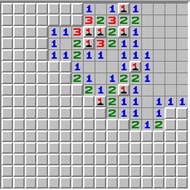

Minesweeper is a tile-clearing puzzle where every move must be calculated. The objective is simple: avoid mines and reveal every other space. But beneath that simplicity lies a deep challenge driven by pattern recognition and strategic foresight.
The first few moves in Minesweeper are vital. Since the board begins concealed, it’s best to open a tile near the center. This usually unveils a wider area and more numbers to work with. Avoid edge-clicking at the start unless you’re following a consistent opening strategy.
Certain tile patterns repeat often and can be read like a language. A ‘1-2-1’ pattern, for instance, hints at specific mine placements. Learn to recognize and decode such setups quickly to minimize mistakes and move efficiently through the game grid.
Advanced versions of Minesweeper include timed rounds or leaderboard competitions. In such cases, your goal is to combine speed with accuracy. To excel under time pressure:
Minesweeper may seem simple, but sessions can become mentally intense. Fatigue often leads to rushed clicks and poor judgments. Taking brief breaks between hard rounds or changing difficulty levels keeps the mind sharp. Confidence grows as you start clearing grids more consistently, especially at expert level.